The flag of Palau is a distinctive emblem that reflects the nation’s respect for its cultural roots and forward-looking vision. Its simple and meaningful design captures Palau’s essence as a serene and progressive island country.
Flag of Palau
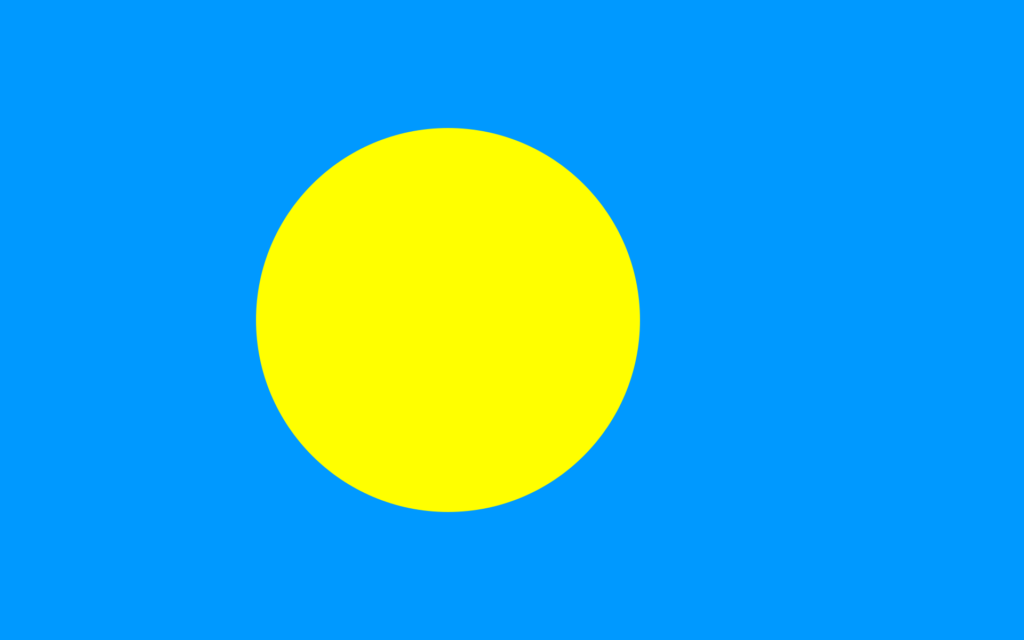
The flag of Palau is distinguished by its large, off-centered yellow disk on a light sky blue field. The placement of the disk is slightly towards the hoist side and gives the flag a dynamic and unique appearance.
This design choice is symbolic and reflects Palau’s cultural and environmental uniqueness, and its minimalist approach speaks to the nation’s serene and harmonious ethos while marking Palau’s independent and unique standing in the global community.
Flag of Palau: Color Palette
Palau Flag Map
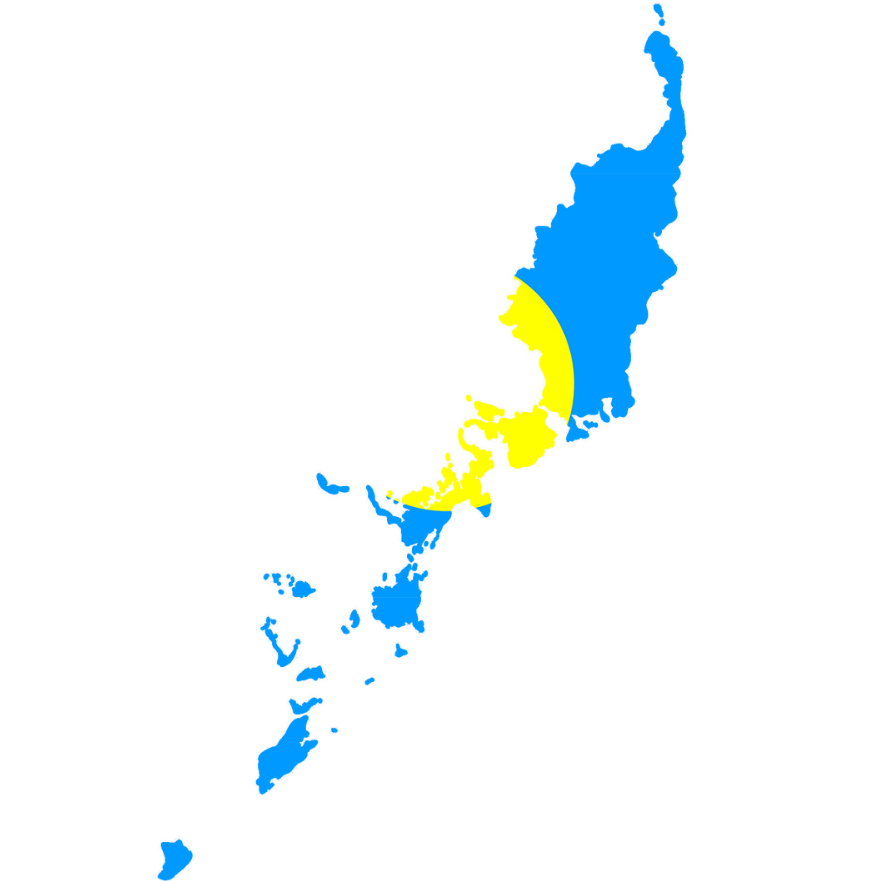
Palau Flag Emoji: 🇵🇼
The color palette of Palau’s flag is elegantly simple yet deeply symbolic, featuring a light sky blue and a bold yellow. These colors are chosen for their visual harmony and profound significance in reflecting Palau’s nature and cultural values.
The following section will delve into the specific meanings behind these colors, unveiling the deeper narrative they convey about Palau and its people.
Meaning of Each Color
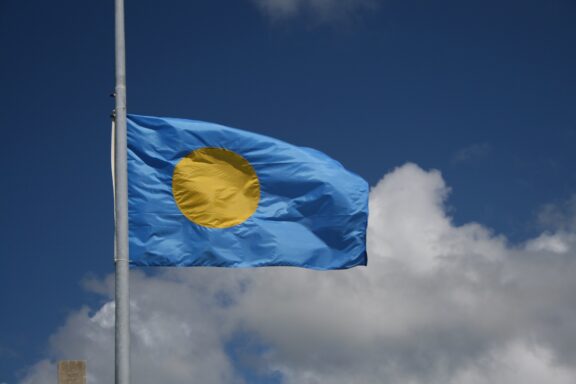
Vivid Cerulean
The vivid cerulean background of Palau’s flag represents the ocean, a crucial element of the Palauan archipelago. Palau is surrounded by the vast Pacific Ocean, which plays a significant role in the nation’s geography, economy, and lifestyle.
The ocean is a sustenance and connection source central to Palauan environmental awareness.
Yellow
The yellow disk symbolizes the full moon. In Palauan culture, the full moon is traditionally considered a time of optimum effectiveness for fishing, planting, and harvesting activities.
This reflects a deep connection between the Palauan people and the natural world’s rhythms. The moon is also a symbol of peace, love, and tranquility, embodying the serene and harmonious spirit of the Palauan community.
Coat of Arms of Palau
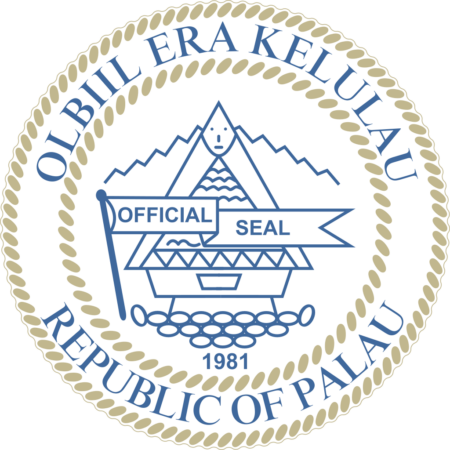
Palau’s Coat of Arms is an emblem rich in significance and symbolism. Unlike the detailed heraldry of European coats of arms, Palau’s design is more reflective of its unique culture and environment:
- Bai (Traditional Meeting House): At the center of Palau’s Coat of Arms is the Bai, symbolizing traditional governance and communal gatherings. This feature is a nod to Palau’s rich legacy and the importance of community in Palauan society.
- 16 Stones: Supporting the Bai are 16 stones, each representing one of Palau’s modern states. These stones signify the harmony and cooperation of the different regions within the nation.
- Banner with “OFFICIAL SEAL” and “1981“: The inclusion of the year 1981 in the Coat of Arms marks a significant milestone in Palau’s history, the year when it became a self-governing territory.
- National Motto “Olbiil era Kelulau“: Encircling the Coat of Arms is Palau’s national motto, which translates to “The House of Decisions,” again emphasizing the importance of communal decision-making and governance in Palauan culture.
This Coat of Arms reflects not just the governmental authority but also weaves in Palau’s rich fabric, highlighting the nation’s values of community, tradition, and unity.
Historical Evolution and the Meaning Behind Changes
The historical evolution of Palau’s flag is relatively straightforward, as the nation has experienced minimal changes in its design since its adoption.
The current flag, featuring a light blue field with a large yellow disk, was adopted on January 1, 1981. This adoption coincided with Palau’s separation from the United Nations Trust Territory of the Pacific Islands and marked its journey towards self-governance.
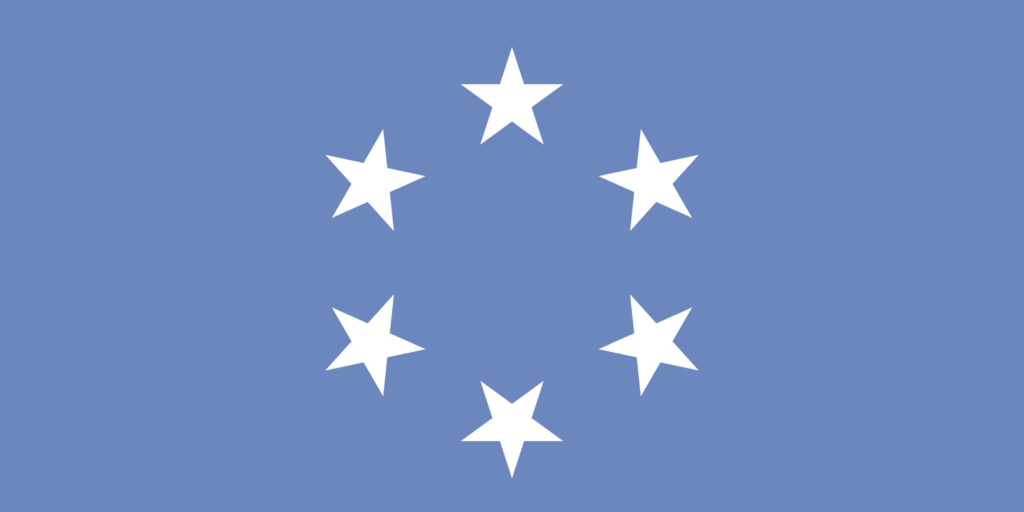
Before this, Palau did not have a distinct flag but was represented by the flags of colonial powers that governed the region. These included Spain, Germany, Japan, and the United States, under whose administration Palau fell at various times in its history. Each of these powers’ flags represented their respective colonial rule over Palau.
The major shift in flag design in 1981 was a significant part of Palau’s assertion of its identity as an independent nation. The new flag’s choice of colors and symbols deliberately moved away from colonial representations to resonate deeply with Palau.
This change in the flag was more than a mere alteration of colors or symbols; it was a declaration of Palau’s newfound status as a self-governing nation, ready to carve out its character on the global stage, independent of its colonial past.
Overall Symbolic Meaning of the Flag
The flag of Palau encapsulates the nation’s essence, blending its respect for nature and cultural traditions into a symbol of national identity. Its simple design conveys a narrative of harmony and continuity.
It reflects the country’s connection to its environment and heritage, and represents Palau’s unique place in the world, embodying its values and aspirations as a sovereign state.
Similar Flags to the Flag of Palau
Let’s explore some of the flags that resemble the flag of Palau in their representation and symbolism to understand the elements that echo the design philosophy of Palau’s flag.
Bangladesh
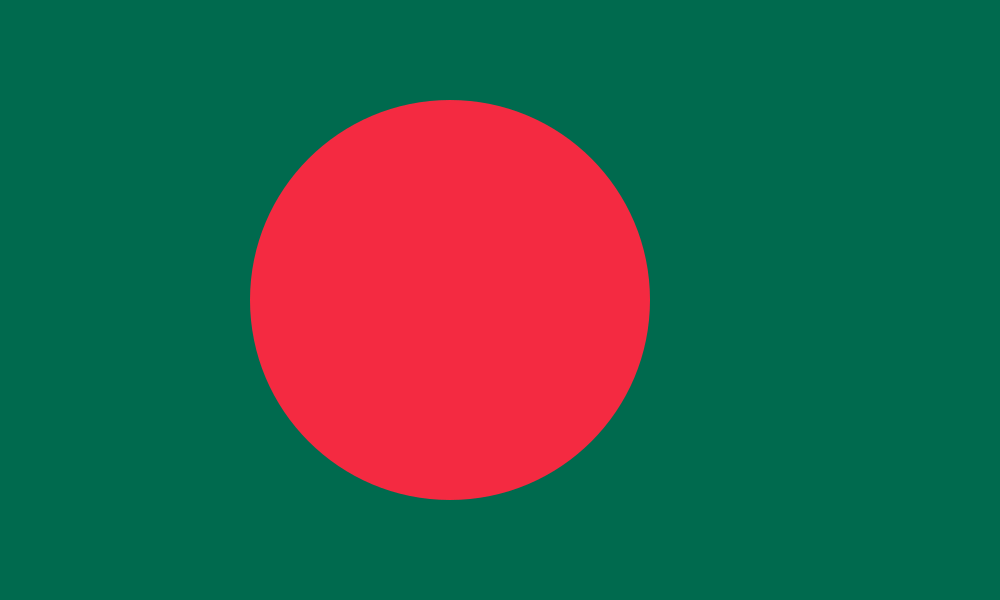
Similar to Palau, Bangladesh’s flag features a prominent disk. This design element signifies a key national symbol and represents a minimalist approach to flag design, focusing on a central thematic feature.
Japan
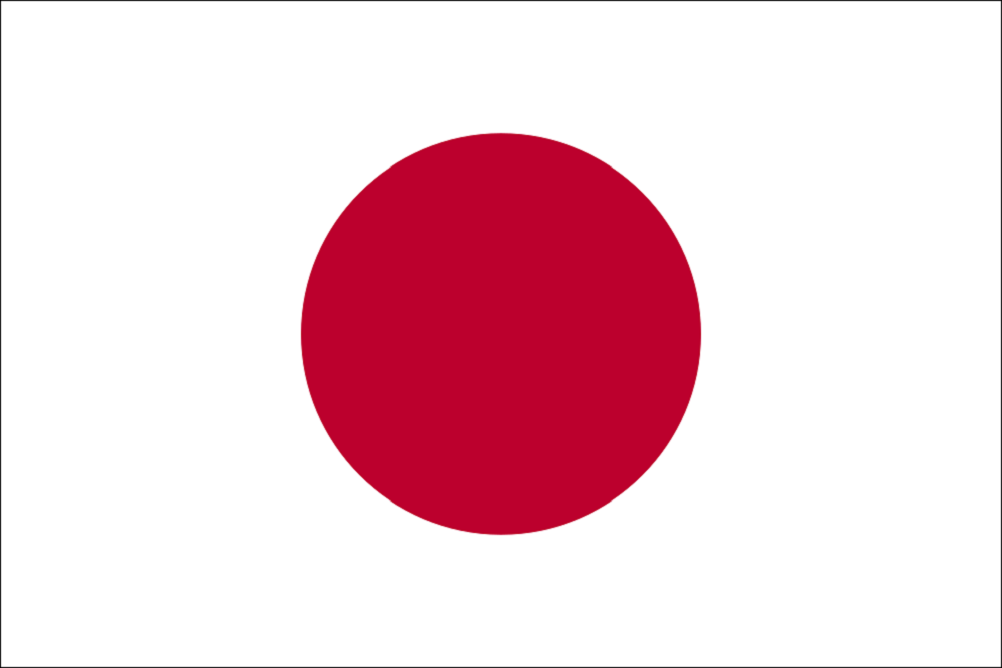
Japan’s flag also employs a single-disk design, a representation that captures the essence of the nation. Like Palau, the simplicity and the focus on a central symbol in Japan’s flag underscore a common principle of clarity and symbolism in flag design.
Kazakhstan
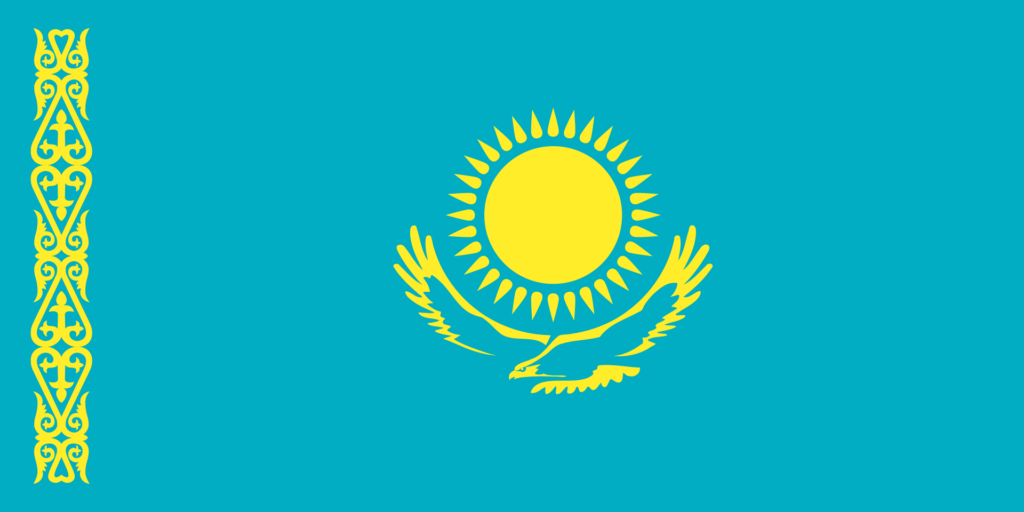
The flag of Kazakhstan, with its central celestial symbol, shares a conceptual similarity with Palau’s flag. Both employ a significant symbol against a solid background, highlighting key aspects of their national or cultural identity through a focused and straightforward design.
Final Thoughts
Palau’s flag symbolizes the nation’s uniqueness and core values with its meaningful colors and design. It is a proud emblem for its citizens and marks Palau’s distinct presence in the diverse array of flags worldwide.
Image Sources and Copyright Information
- Palauan Flag Against Blue Sky: © Kalaus Stiefel/Flickr | CC BY 2.0 Generic